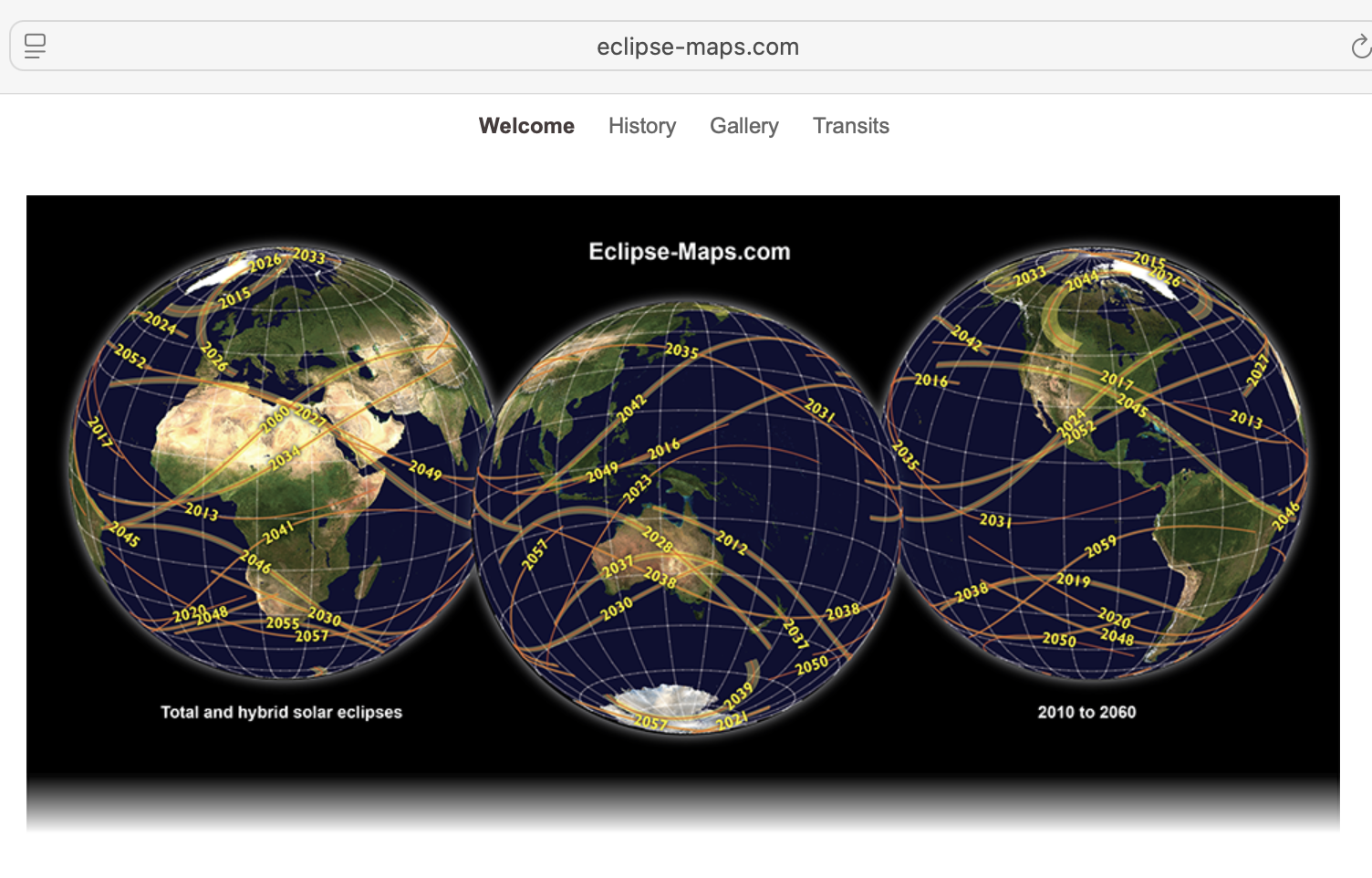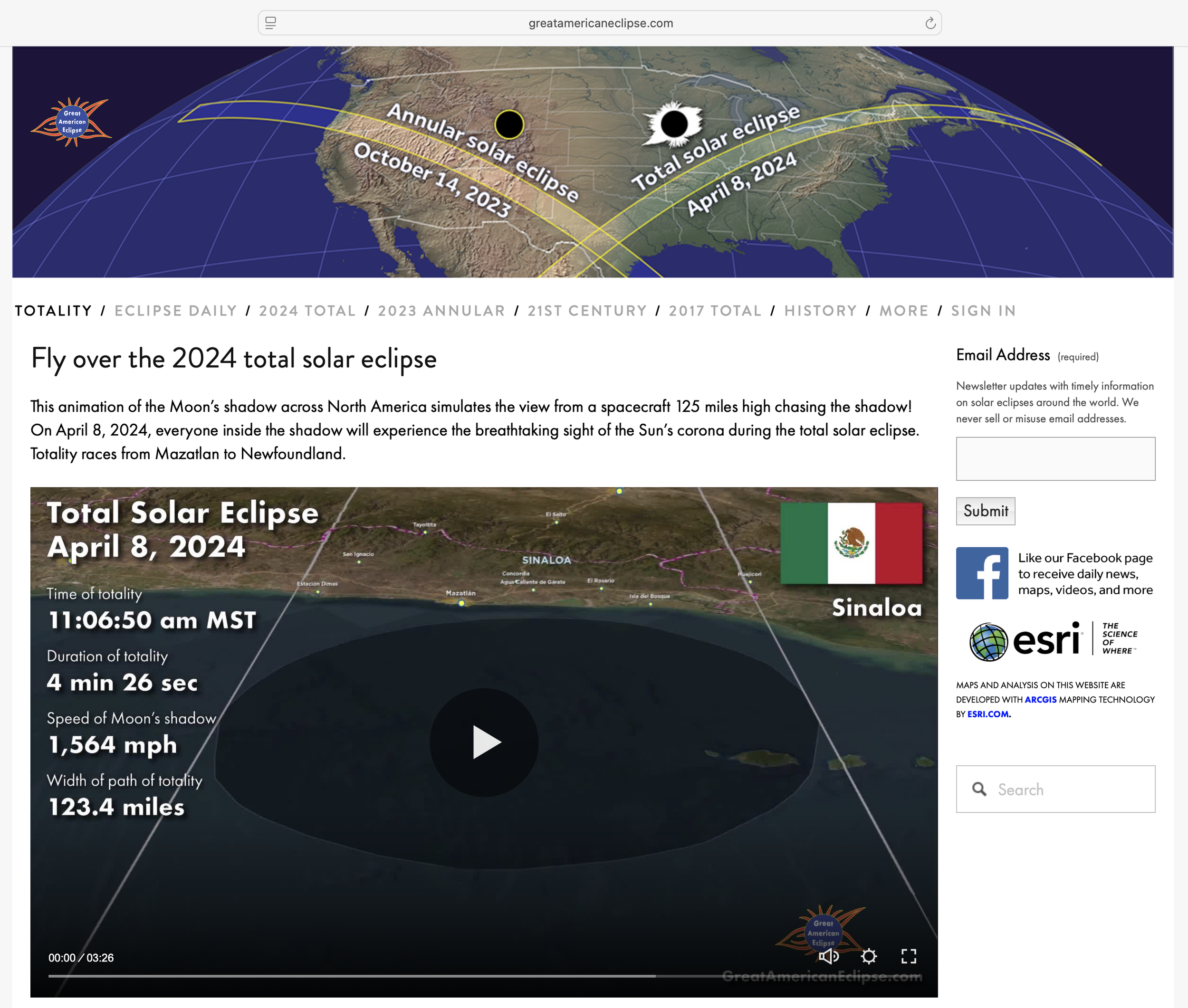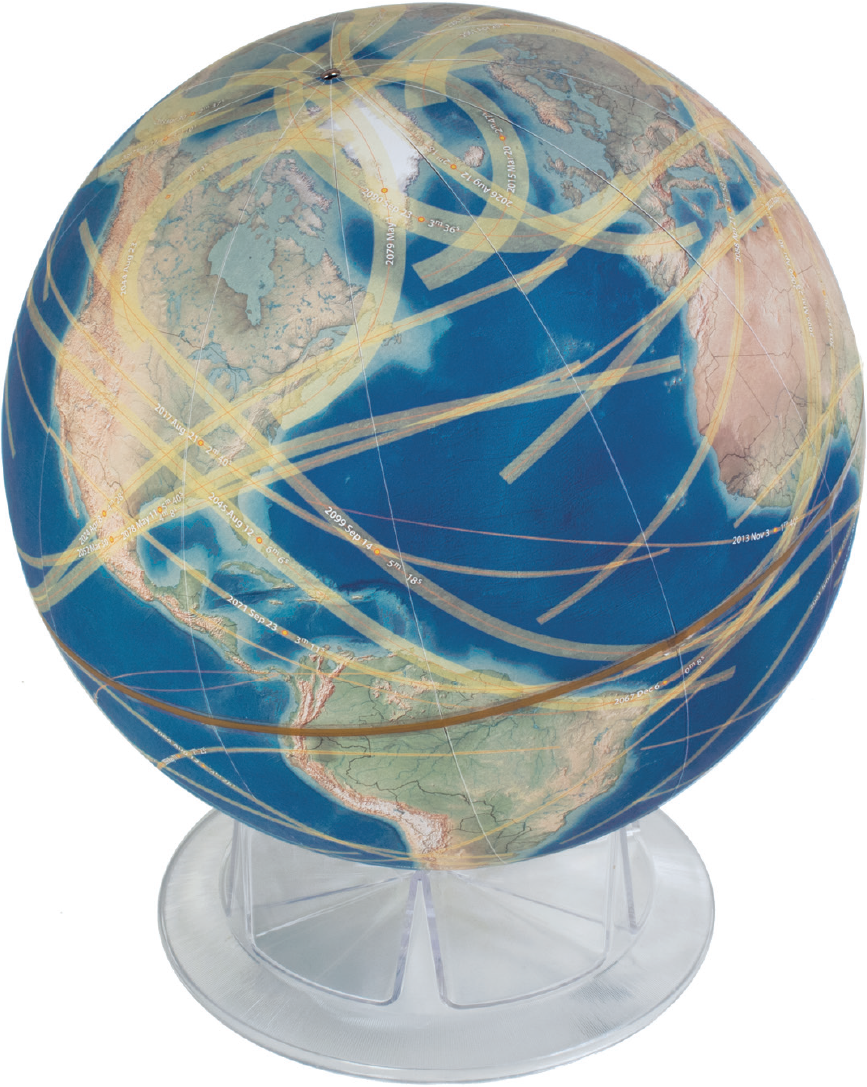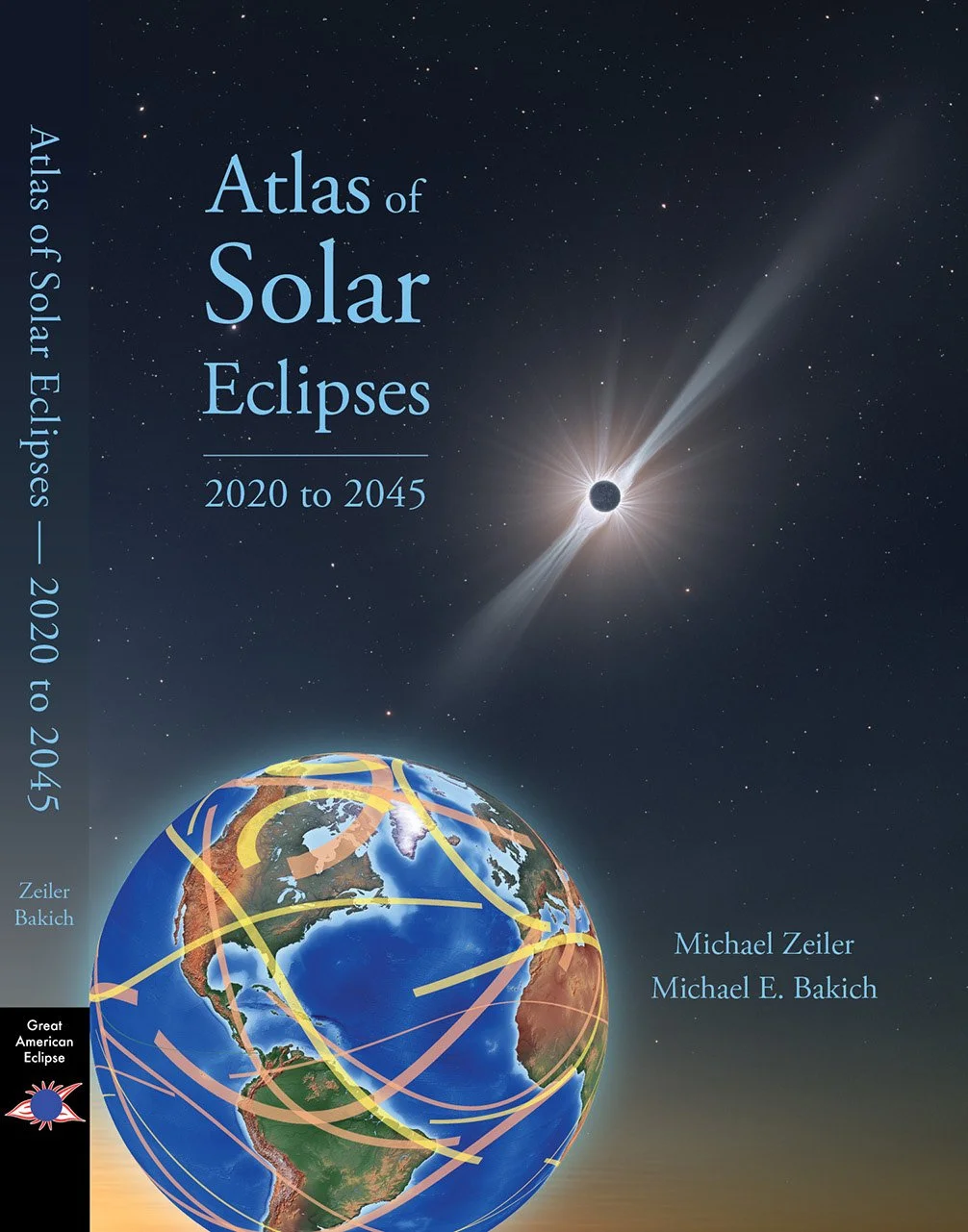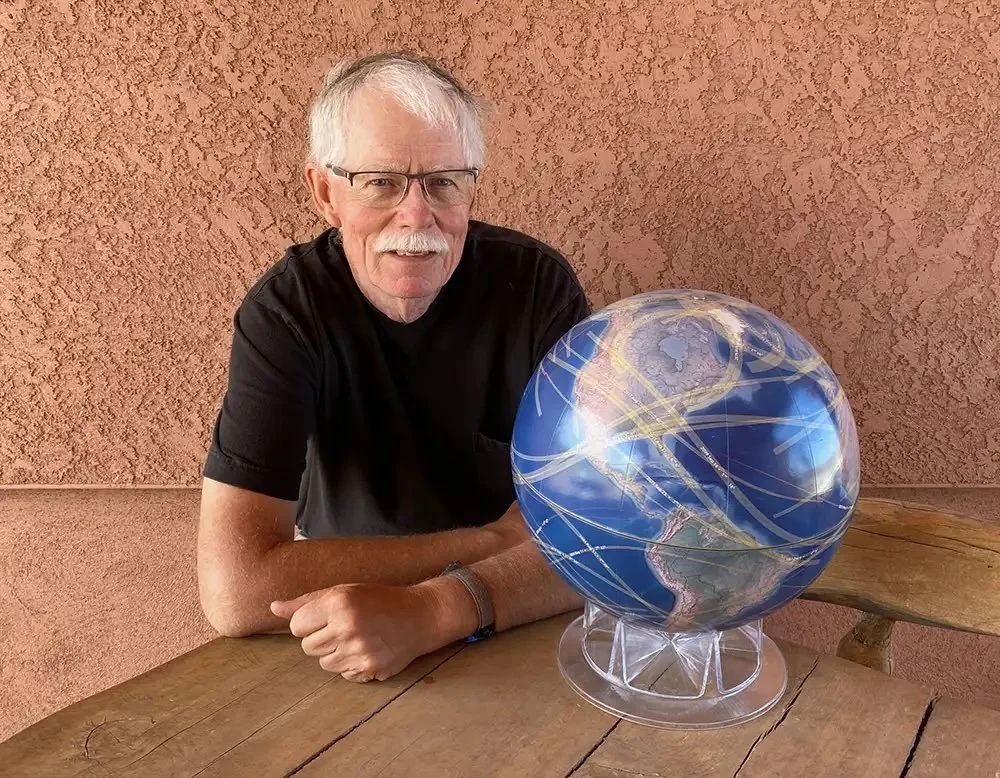
Eclipse Atlas is a passion project of Michael Zeiler to celebrate the beauty of historic eclipse maps and to serve as a gallery of his eclipse cartography.
Michael Zeiler is a retired cartographer and had a long career as a technical writer for Esri, the world’s leading GIS company. Michael wrote seven books on geographic data modeling. Michael also has a lifelong interest in astronomy and has observed 12 total solar eclipses starting in 1991.
As Michael was preparing for his 4th total solar eclipse in 2009, he was curious to know whether an eclipse cruise he was soon to board would indeed reach the point of maximum eclipse as advertised. Existing eclipse maps did not provide the necessary context for navigation at sea so Michael decided to make his own. Michael first collaborated with Bill Kramer who provided the data for his first eclipse maps which were displayed on the ship Costa Classica. These eclipse maps received wide interest and Michael was encouraged to keep creating eclipse maps for coming eclipses.
Michael’s work was recognized by the International Astronomical Union with the naming of asteroid 53253 Zeiler (1999 EV5) . Michael lives on Hawai’i Island with his wife Polly White.
Michael launched his first website, eclipse-maps.com in 2010 with an archive of historic eclipse maps and a gallery of his early maps for eclipses from 2009 to 2014. Michael learned many lessons by studying historic eclipse maps and applies those lessons to his map production.
In 2014, Michael and his wife Polly White launched greatamericaneclipse.com with a focus on reaching the public with emphasis on the three solar eclipses over North America in 2017, 2023, and 2024.
Michael released EclipseAtlas.com on August 12, 2025 with the goals of expanding to a global scope, replacing his two prior websites over time, and to taking his work in eclipse cartography to new levels.
Michael has developed several products for enthusiasts of solar eclipses; the first globe of solar eclipses in collaboration with Sky & Telescope magazine and two books Field Guide to the 2023 and 2024 Solar Eclipses and Atlas of Solar Eclipses - 2020 to 2045 with Michael Bakich, former senior editor of Astronomy magazine.
Collaborations
For half a century, Fred Espenak led the field of eclipse computations. Michael’s eclipse maps in this website are based on Besselian Elements developed by Fred, which are the foundation of eclipse calculations.
Fred sadly passed away on June 1, 2025. We miss his wisdom, friendship, generosity, and passion for totality. A great remembrance of Fred by his friend and collaborator Jay Anderson is at skyandtelescope.org/astronomy-news/fred-espenak-1953-2025/
His legacy continues with his many eclipse publications and his websites eclipsewise.com, mreclipse.com, and astropixels.com. Most notably, Fred Espenak and Jean Meeus published the epic Five Millennium Catalog of Solar Eclipses.
Xavier Jubier pioneered the development of interactive eclipse maps. A user can select an eclipse, zoom into any potential viewing site, and determine a wide variety of eclipse circumstances; times, duration, sky position of the eclipse, and more. This revolutionized eclipse mapping and Xavier’s site xjubier.free.fr is the essential resource for all eclipse chasers.
Xavier kindly adapted his application Solar Eclipse Maestro, primarily used for automating eclipse photography, to export gridded data used by Michael to produce the eclipse features on his maps. This data is generated in the form of about 50 million points for each eclipse with latitude/longitude and eclipse circumstances such as times, durations, and more. Michael imports this data into ArcGIS Pro and performs geo processing functions, treating the eclipse circumstances the same way as elevations in a lidar dataset. Xavier’s calculations take into account the irregular shape of the Moon’s profile and include corrections for atmospheric refraction.
Contact us.
We’d love to hear from you. If you have a question, enhancement request, additional maps to add to Eclipse Atlas, or any other query, send us a message below.
The eclipse maps by Michael Zeiler may be freely shared on social media, print media, broadcast media, websites, and blogs. All we ask for is a credit to EclipseAtlas.com and that our maps not be altered. Contact us if you wish to use our maps for product-based commercial purposes.


